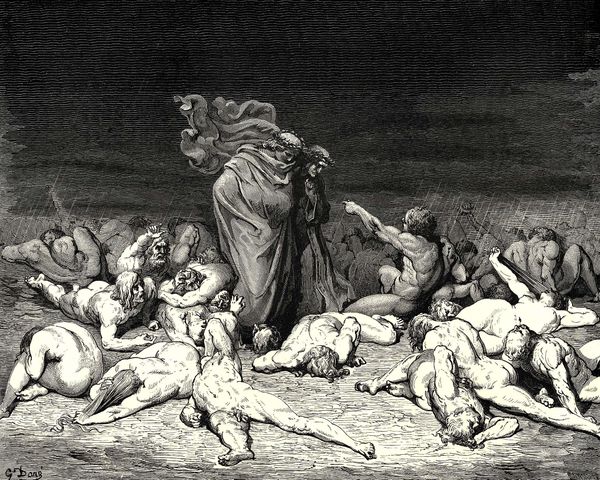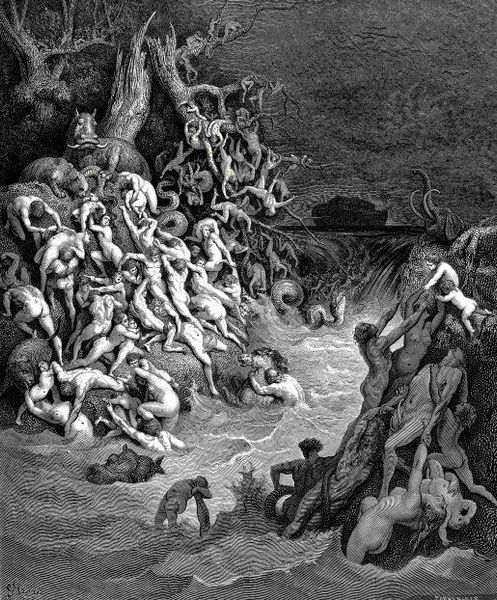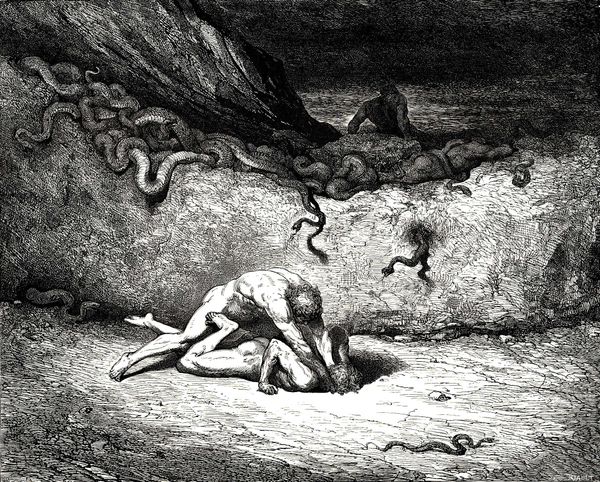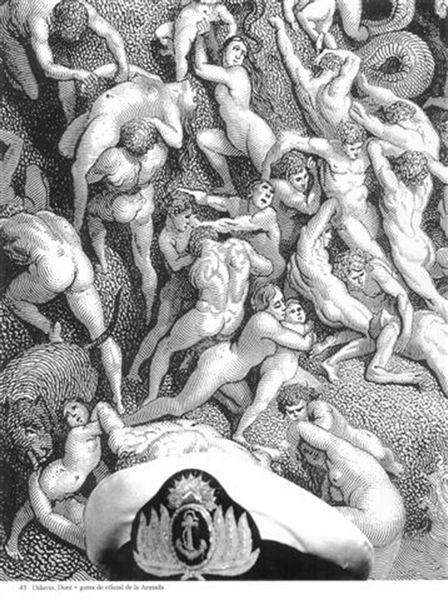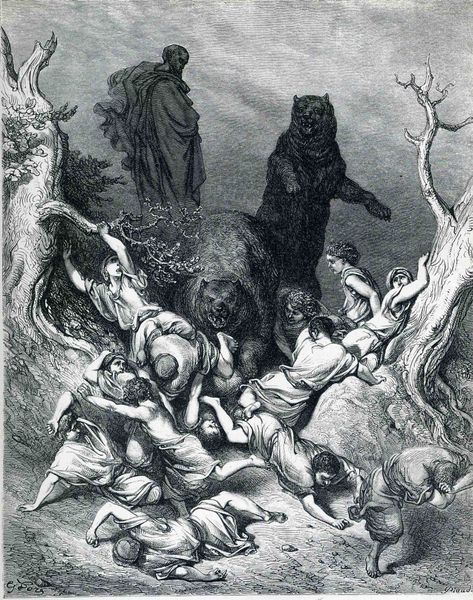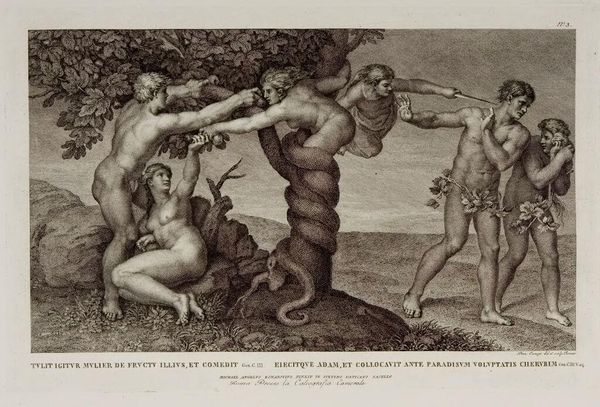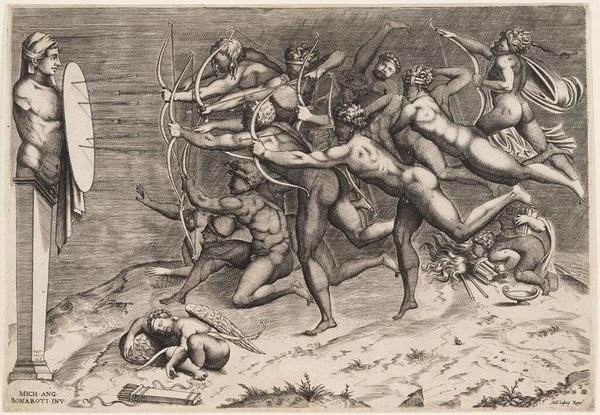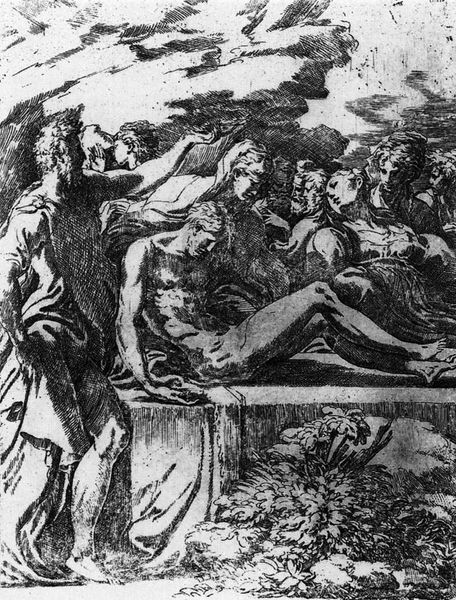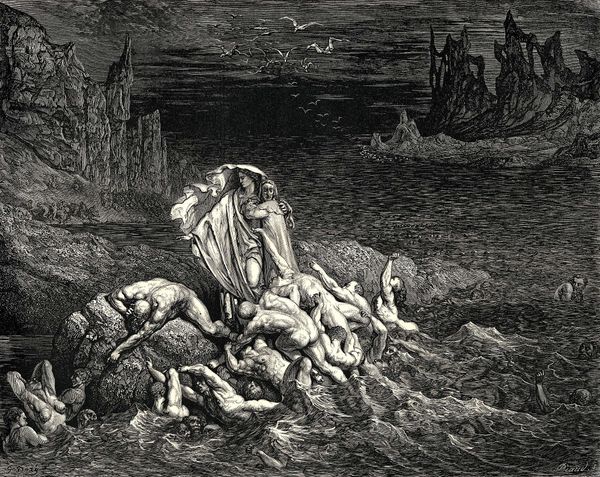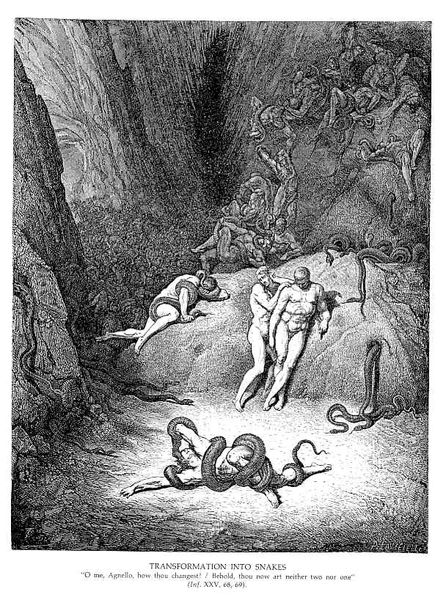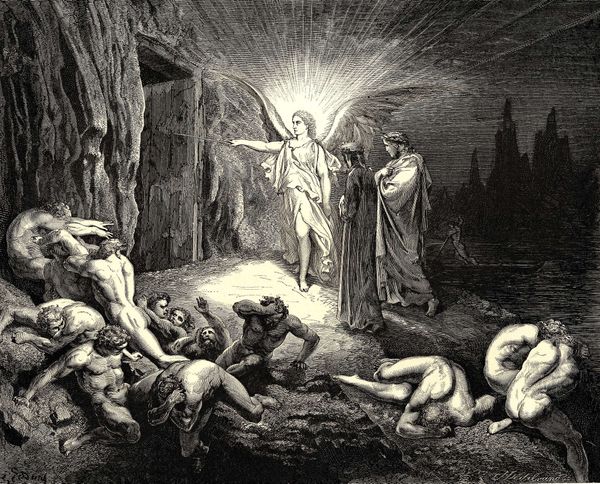
print, engraving
#
allegory
#
narrative-art
# print
#
figuration
#
romanticism
#
black and white
#
surrealism
#
men
#
line
#
history-painting
#
nude
#
engraving
Copyright: Public domain
Curator: This is Gustave Dore’s engraving, "The Inferno, Canto 24." In it, we see figures in torment, overwhelmed by serpents in a rocky landscape. Editor: It’s immediately chaotic and visceral. There's so much dynamic movement, all those bodies twisting and writhing against the sharp lines of the rocks and snakes. A sense of suffocating dread permeates everything. Curator: Absolutely. Doré, a master of Romanticism, uses the dramatic imagery of Dante’s Inferno to explore themes of sin and suffering. Snakes in visual art have held complex, often dualistic, meanings across cultures. In the West, from the Garden of Eden to Greek myth, serpents embody temptation and knowledge—but also healing. What symbolic functions do you think Dore wants to evoke? Editor: Dore seems to amplify their negative connotations: deceit, danger, and primal fear. These figures are not merely surrounded; they are actively consumed, their agency taken away. Think about what those associations meant in the rapidly industrializing 19th century, rife with its own unique forms of exploitation and moral panic. Dore’s “Inferno” isn’t just about religious damnation; it’s a condemnation of the earthly infernos of his time, the brutal social hierarchies. Curator: Yes, you highlight that, in the engraving medium itself, the stark black and white contrasts contribute to the overall atmosphere of stark moral division—visually amplifying the tension. Notice the nude bodies themselves: they evoke a vulnerability that emphasizes the torturous loss of spiritual control, and signal that these men have been utterly stripped of earthly protection and dignity. Editor: And beyond the spiritual reading, aren’t they a striking comment on the social body? To be naked in Dore’s time, especially for men, was transgressive. There's an unveiling of the human condition laid bare, forcing viewers to confront uncomfortable truths about power and exploitation. These bodies almost become anonymous. In the pit they resemble those subject to the brutal vagaries of unregulated capital. Curator: Precisely. The historical and political critiques provide a crucial layer of interpretation here. The genius of Dore’s work lies in its enduring capacity to act as a mirror, reflecting both our individual anxieties and collective societal failures. Editor: Dore invites a radical rethinking of established canons, encouraging audiences to re-evaluate historical accounts of societal progress. His engravings compel us to revisit not just the past, but the trajectory of the present.
Comments
No comments
Be the first to comment and join the conversation on the ultimate creative platform.
